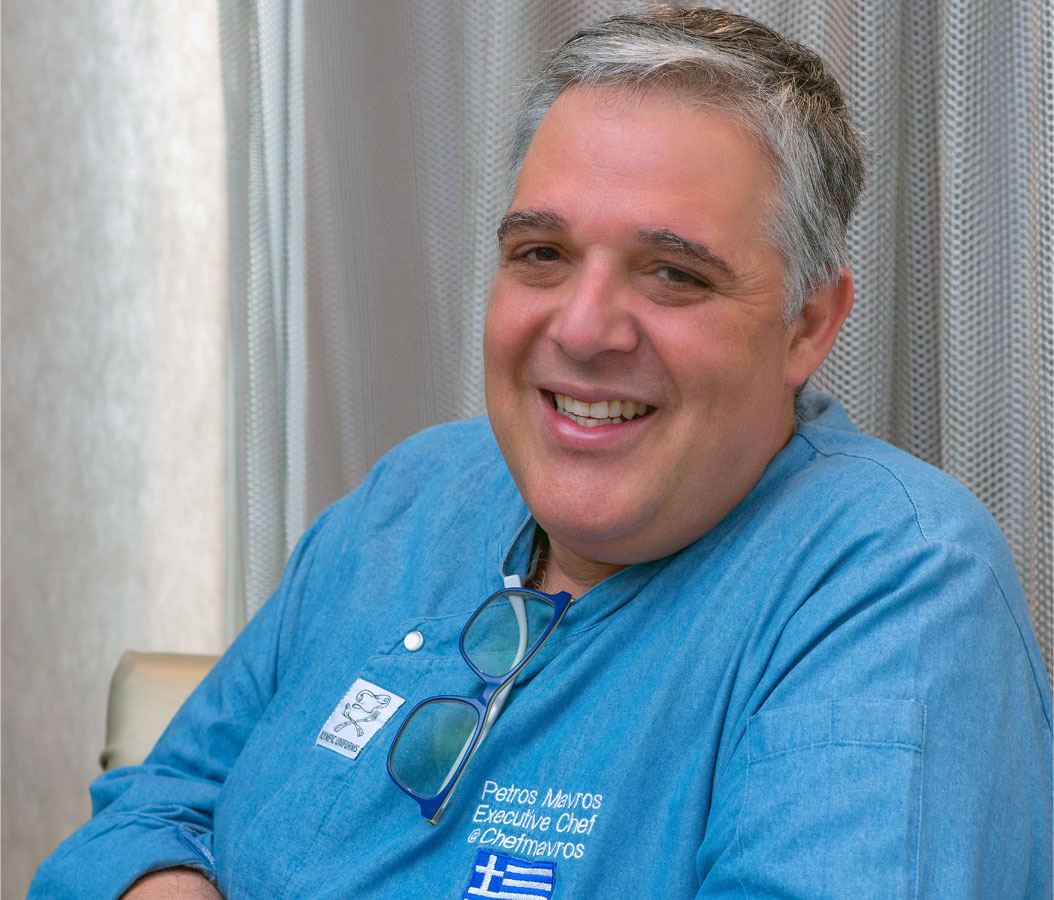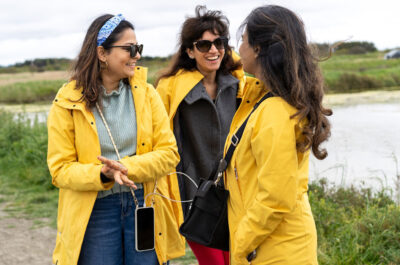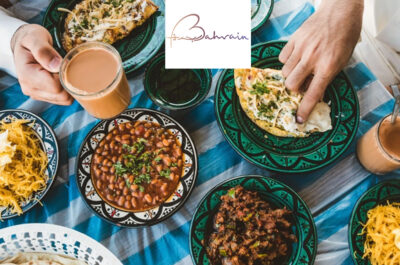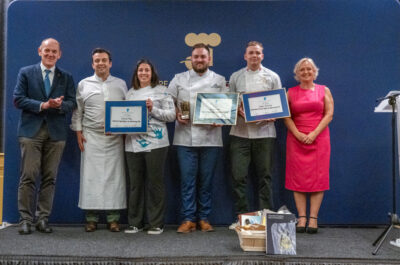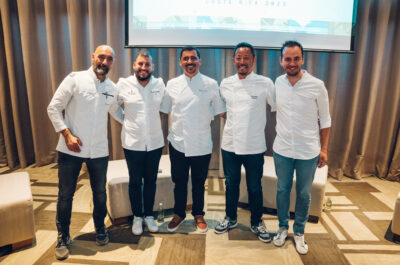Substance beats style; respect flavors, textures. Connect with culinary heritage, make each dish a unique masterpiece.
Petros Mavros, Executive Chef of Adams Beach Hotel, Ayia Napa, Cyprus talks about culinary-focused TV shows, Veganism and sustainability…
- How do you believe the overall dining experience contributes to a customer’s satisfaction, and what steps do you take to ensure a memorable meal?
Let me share a real-life anecdote with you. Back when I was working in Saudi Arabia, we were gearing up for the grand opening of a luxurious 5-star hotel, exclusively featuring villas. However, Mother Nature threw us a curveball with a sandstorm in the final days leading up to the opening, causing delays in perfecting the finishing touches. This meant that the conditions for the opening weren’t as ideal as we had hoped.
Facing this challenge head-on, the General Manager and I (serving as the Corporate Executive Chef) devised a plan. We decided to offer a complimentary full meal to all guests checking in during the first two days. Whether it was lunch or dinner, the meal was served in a restaurant overlooking the sea. I made it clear to the kitchen team that each dish had to be “double nice and double taken care of” because this meal was the guests’ initial encounter with the hotel, happening in the restaurant rather than the typical first experience of entering their room.
Our approach was to craft exceptional, comforting dishes with an extra layer of care and delectability. No shortcuts, no pre-made sauces, no artificial elements – just food made with love, attention, and freshness. Despite the challenges posed by the delayed finishing, this complimentary meal acted as a remedy for potential complaints and significantly contributed to the hotel’s outstanding online reputation.
- With the rise of culinary-focused TV shows, how has the media’s portrayal of chefs influenced your approach to your work?
Absolutely, the culinary world has seen a shift, thanks in part to Gordon Ramsay breaking the mold and encouraging chefs to shed their shyness. The rise of cooking TV shows initially brought a glimpse into the professional kitchen, adding an element of fun to the industry. However, things took a serious turn when individuals with no real kitchen experience donned aprons adorned with the a title as “Master Chef.”
The confusion escalated as restaurant owners began shelling out exorbitant sums to amateurs who gained fame on low-intelligence reality shows. Suddenly, these individuals were tasked with signing menus and “creating” recipes solely based on their TV presence. It’s crucial to set the record straight – being on a TV show is one thing, navigating a real professional kitchen is an entirely different ball game.
Gordon Ramsays are a rare breed, much like the few Leonardo da Vinci painters or legendary football players like Maradona and Pelé. Not every cook showcased on TV is a great chef; many are merely mediocre cooks who could benefit from spending ample hours in the trenches of a large hotel or restaurant kitchen, honing their skills on the humble potato peeling section.
- In the ever-evolving world of food trends, how do you stay ahead to provide innovative and appealing dishes for your customers?
Staying ahead in the dynamic realm of food trends is both a challenge and an exciting opportunity. To ensure that our menu remains innovative and appealing, I keep a close eye on emerging culinary trends, but without losing the original route, which is not other than the Good Old Fashion Cooking. I do experiment with new ingredients and cooking techniques, and actively seek inspiration from diverse sources such as global cuisines, cultural influences, and even customer feedback. But at the same time, I dig the tradition, I seek the story behind a Greek pulses dish, I reuse an old cheese in a new way, I look back into old books and I redo foods that were lost in time. Collaboration with a creative and passionate culinary team also plays a crucial role in brainstorming and implementing fresh ideas. Ultimately, the goal is to strike a balance between staying on-trend, be faithful to our roots so as we deliver a dining experience that takes us to the past and at the same time enlightens the future of this profession.
- Veganism has gained significant traction in recent years. How have you adapted your menu to accommodate this growing trend, and what challenges have you encountered in creating satisfying plant-based dishes?
My culinary roots are deeply embedded in Greek Mediterranean cooking, and interestingly, our culinary DNA leans towards the vegan spectrum. It’s a unique approach – I incorporate split peas, chickpeas, broad-back beans, giant beans, and black-eye beans into our weekly menu, and surprisingly, no one misses the presence of meat when they taste those dishes. Essentially, the people living arrond the mediterranean basin we are vegans who occasionally break our fasting with a meaty indulgence throughout the year. This is exactly what we used to be not so long ago, 100 years ago we ate meat occasionally. This occasional meat eating was definitely a very sustainable way of living, and this is what veganism should preach.
Now, let me make it clear – I’m not proclaiming myself as a vegan prophet or a proselytizer. My aim is not to convert, but rather to create menus that cater to everyone. I strive to offer diverse options for vegans, ensuring they have flavorful choices that don’t rely on imitating meat. (Ever heard of vegan steak that “bleeds” beetroot juice to mimic the juices of rare-cooked beef? I find it a bit ridiculous.) It’s all about celebrating the richness of plant-based ingredients without the need for culinary theatrics.
- Can you share a memorable experience where you had to think on your feet and come up with a creative solution to a kitchen crisis?
In Tarragona, Spain, a remarkable wedding unfolded at a Golf Club on October 3, 1999. The venue, atop a hill, provided a stunning backdrop of the Gulf of Tarragona and fishing boats returning to port under a clear blue sky.
The celebration kicked off with an extended garden aperitif, a norm in affluent Spanish weddings of the time, hosting over 500 guests. A lavish finger buffet, including live cooking stations, a “jamon” station, and a seafood buffet, set the tone post a morning church ceremony.
Commencing at 2 pm, the aperitif lasted for three to four hours, with the newlyweds receiving well- wishes until 7 pm. After a brief retreat, the couple reappeared at 9 pm for a 250-guest dinner. Leading a team of six cooks, including sous chef Gustavo from Venezuela, I navigated a demanding four-course menu.
However, the weather turned swiftly. Rain transformed into a hailstorm, forcing a hasty move indoors. The dinner continued by candlelight after a power outage. As dessert was served, another challenge emerged – lights out, intensified hail, and a generator failure. Improvisation became key; we whisked instant coffee into a creamy consistency, heated milk on gas stoves, and used hot water, reminiscent of the famous Greek Frappe.
The impromptu coffee service not only salvaged the moment but also garnered praise, reflecting the resilience of the team and the trust placed in leadership, particularly the maître d’hotel. The celebration endured, concluding with the dance – a testament to the essence of weddings lying in adaptability and shared moments of joy amidst unforeseen challenges
- In your opinion, how does the cultural diversity of your kitchen staff contribute to the richness and authenticity of the dishes you create?
Multiculturalism in European kitchens is longstanding. In my 1992 Zurich kitchen stage, our small team of five represented five different passports: Spanish, Sri Lankan, Turkish, Austrian, and myself from Cyprus. This cultural mix not only enriches but also authenticates our culinary creations. Each member brings unique culinary perspectives, techniques, and flavors rooted in their background. For example, Asians and Greeks use spices differently, offering fresh takes on each other’s dishes.
This diversity sparks innovative fusions, deepening our understanding of global cuisines. Varied experiences enhance our ability to craft authentic, appealing dishes for a diverse audience. Additionally, different nationalities bring invaluable skills; tasks like deboning a pork leg may go to an Italian or Spanish cook, while a Philippine Sushi chef excels at salmon filleting.
- With the increasing focus on sustainability, how do you source your ingredients, and what initiatives do you have in place to minimize kitchen waste?
Sourcing local ingredients is not just a cliché for me – it’s a way of life. It’s my top priority when creating a menu, whether I’m in London, Barcelona, Ayia Napa, or Jeddah. Before entering any new kitchen worldwide, I always visit the local market, my version of “the local Church.” Whether it’s La Boqueria in Barcelona, Billingsgate in London, Jeddah’s fish market, or Varvakeio Market in Athens, the essence of local products and inspiration thrives there. Even in Ayia Napa, lacking a central market, surrounding villages yield fantastic products like “Xylophagou potato” or “Sotira Kolokasi” (taro).
As for waste, it’s a concept I vehemently reject. Any chef allowing waste in their kitchen, in my humble opinion, should consider a career change. Across Mediterranean cultures – Christian, Jewish, and Muslim – wasting food is a grave offense, a source of anger for mothers and grandmothers. As a Chef, I design dishes and menus that utilize every edible part of each ingredient. Practices like squaring steaks and trimming fish without explanation are culinary crimes no chef should tolerate.
- Are there particular regional or global cuisines that have significantly influenced your culinary style, and how do you incorporate those influences into your menu?
I proudly embrace my culinary heritage, rooted in the essence of Sundays with the savory “psito” the allure of a wood oven’s Sunday roast, and the fragrance of mint-infused Easter cheese pies. My culinary DNA is enriched by the abundance of olive oil in my salads, the art of preparing stuffed vegetables, and the indispensable role of vine leaves in my cooking. From wine-marinated pork to the aromatic touch of dry coriander in my potatoes, my identity as a "Greek Cook" is a tapestry woven with Minor Asian flavors, techniques from the Near and Middle East, and the influence of products from the Nile.
In my gastronomic journey, I have had the privilege of crossing paths with cooks from diverse backgrounds – Nepali, Indian, Philippine, Japanese, Chinese, Indonesian – who have generously shared their wisdom, expanding my culinary horizons beyond imagination. This fusion of cultures finds expression in my Greek Kakavia Soup, where ginger adds a surprising depth, and in my Avgolemono Soup, where lemongrass imparts a unique twist. To amplify the flavor profile, my fridge is always stocked with chili and garlic pastes, ready to infuse my creations with a bold and vibrant punch. My love for Greek classics remains unwavering, yet I continually weave a tapestry of diverse influences into my culinary repertoire, creating a harmonious symphony of flavors that reflects the richness of my gastronomic journey.
- Balancing taste and presentation is crucial in the culinary world. How do you strike that balance, and what advice would you give to aspiring chefs looking to master this skill?
For young chefs, prioritize balance over Instagram fame. Before showcasing on social media, delve into ingredient essence. Understand nature’s design, cooking points, and preserve taste. View the plate as a canvas, balancing tradition and creativity. Substance beats style; respect flavors, textures. Connect with culinary heritage, make each dish a unique masterpiece. Basics endure in a world of trends.
- If you weren’t an Executive Chef, what job would you prefer?
Well, I intentionally chose to become an Executive Chef. I started my career in the hospitality sector, moving up the ranks from restaurant manager to food and beverage manager and quickly reaching the General Manager level. However, significant life changes prompted me to take the opportunity to shift into the kitchen as an Executive Chef. This decision aligns with my true passion, giving me energy as I oversee kitchens that produce enjoyable food – food that brings smiles to people’s faces. Currently, there’s no other profession I would choose; this is the one I’m genuinely passionate about.
Vicky is the co-founder of TravelDailyNews Media Network where she is the Editor-in Chief. She is also responsible for the daily operation and the financial policy. She holds a Bachelor's degree in Tourism Business Administration from the Technical University of Athens and a Master in Business Administration (MBA) from the University of Wales.
She has many years of both academic and industrial experience within the travel industry. She has written/edited numerous articles in various tourism magazines.











